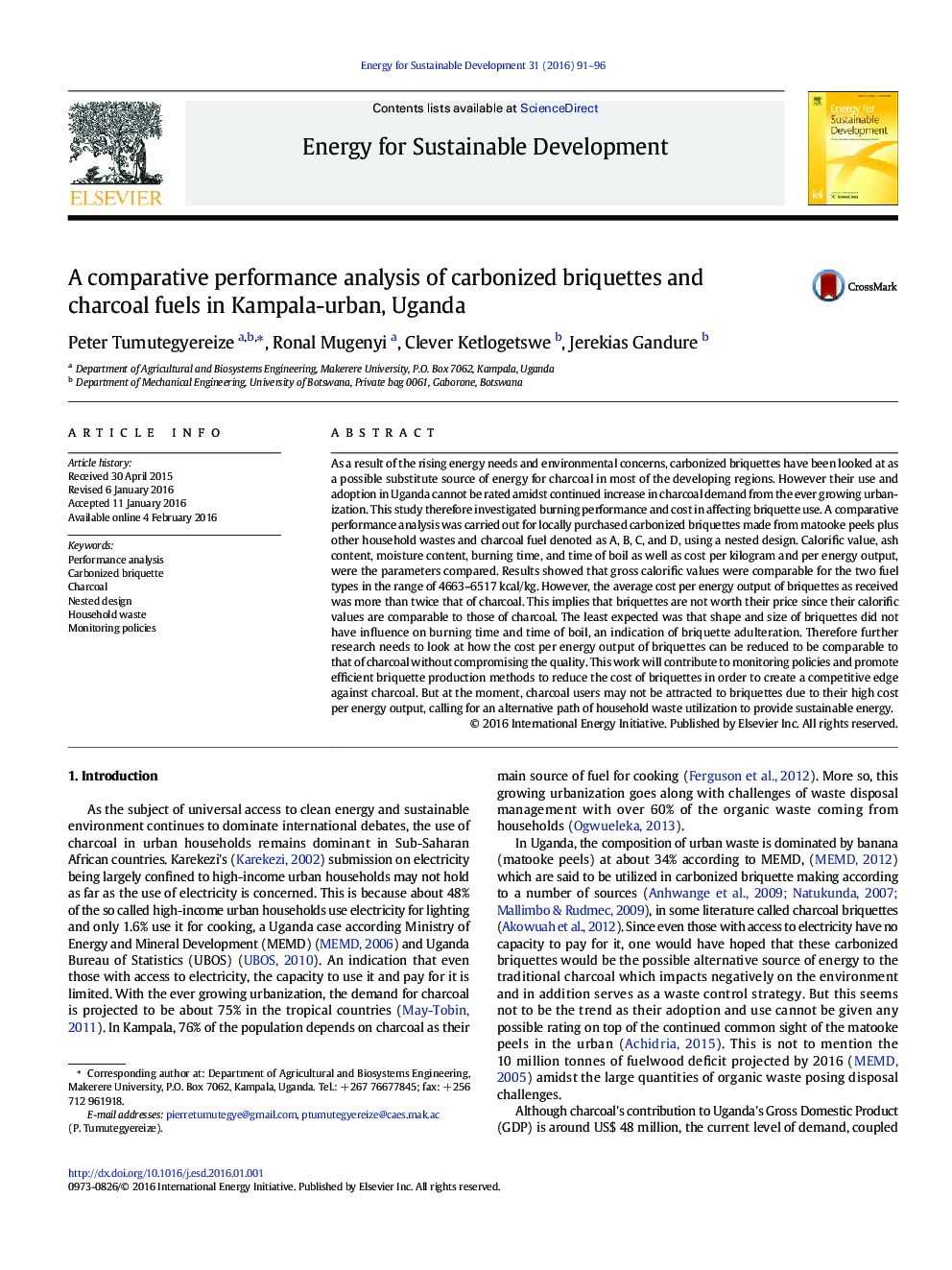| کد مقاله | کد نشریه | سال انتشار | مقاله انگلیسی | نسخه تمام متن |
|---|---|---|---|---|
| 1046809 | 1484399 | 2016 | 6 صفحه PDF | دانلود رایگان |
• Energy output of carbonized briquettes from household waste and charcoal are similar.
• Average cost per energy output of briquettes is more than twice that of charcoal.
• Least expected is that shape and size of briquettes have no effect on performance
As a result of the rising energy needs and environmental concerns, carbonized briquettes have been looked at as a possible substitute source of energy for charcoal in most of the developing regions. However their use and adoption in Uganda cannot be rated amidst continued increase in charcoal demand from the ever growing urbanization. This study therefore investigated burning performance and cost in affecting briquette use. A comparative performance analysis was carried out for locally purchased carbonized briquettes made from matooke peels plus other household wastes and charcoal fuel denoted as A, B, C, and D, using a nested design. Calorific value, ash content, moisture content, burning time, and time of boil as well as cost per kilogram and per energy output, were the parameters compared. Results showed that gross calorific values were comparable for the two fuel types in the range of 4663–6517 kcal/kg. However, the average cost per energy output of briquettes as received was more than twice that of charcoal. This implies that briquettes are not worth their price since their calorific values are comparable to those of charcoal. The least expected was that shape and size of briquettes did not have influence on burning time and time of boil, an indication of briquette adulteration. Therefore further research needs to look at how the cost per energy output of briquettes can be reduced to be comparable to that of charcoal without compromising the quality. This work will contribute to monitoring policies and promote efficient briquette production methods to reduce the cost of briquettes in order to create a competitive edge against charcoal. But at the moment, charcoal users may not be attracted to briquettes due to their high cost per energy output, calling for an alternative path of household waste utilization to provide sustainable energy.
Journal: Energy for Sustainable Development - Volume 31, April 2016, Pages 91–96
